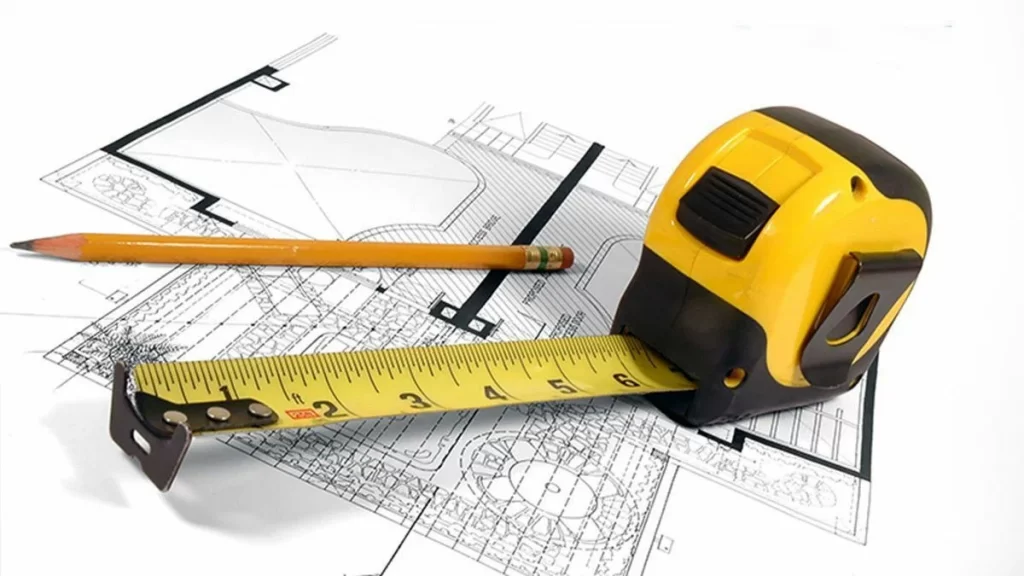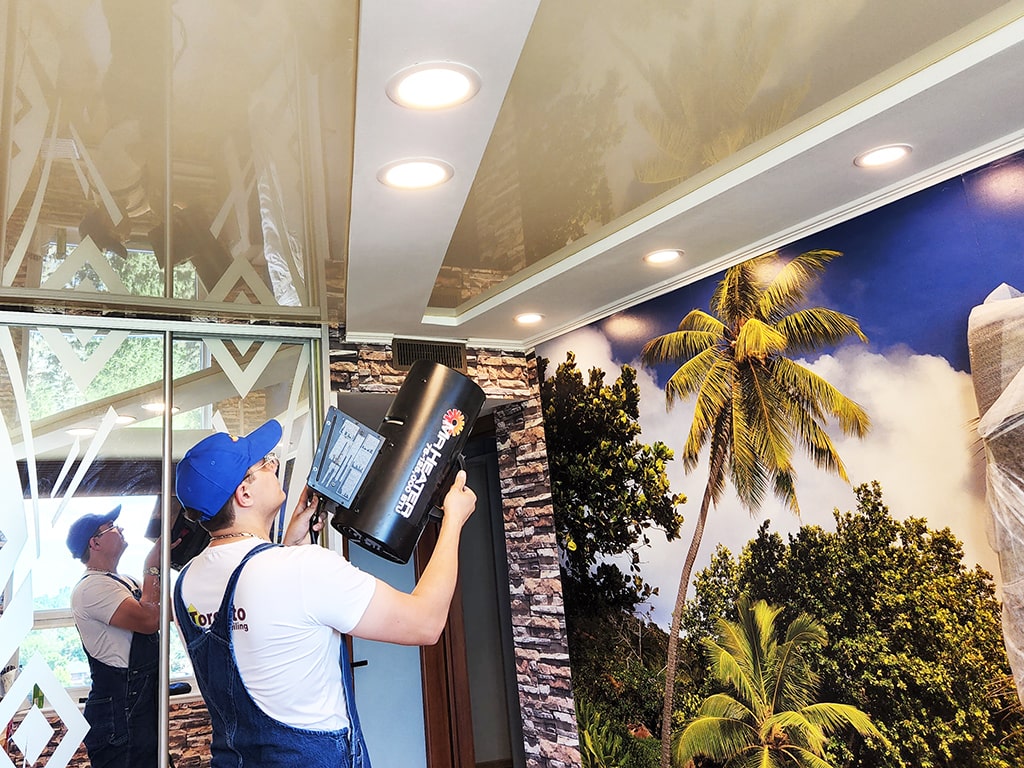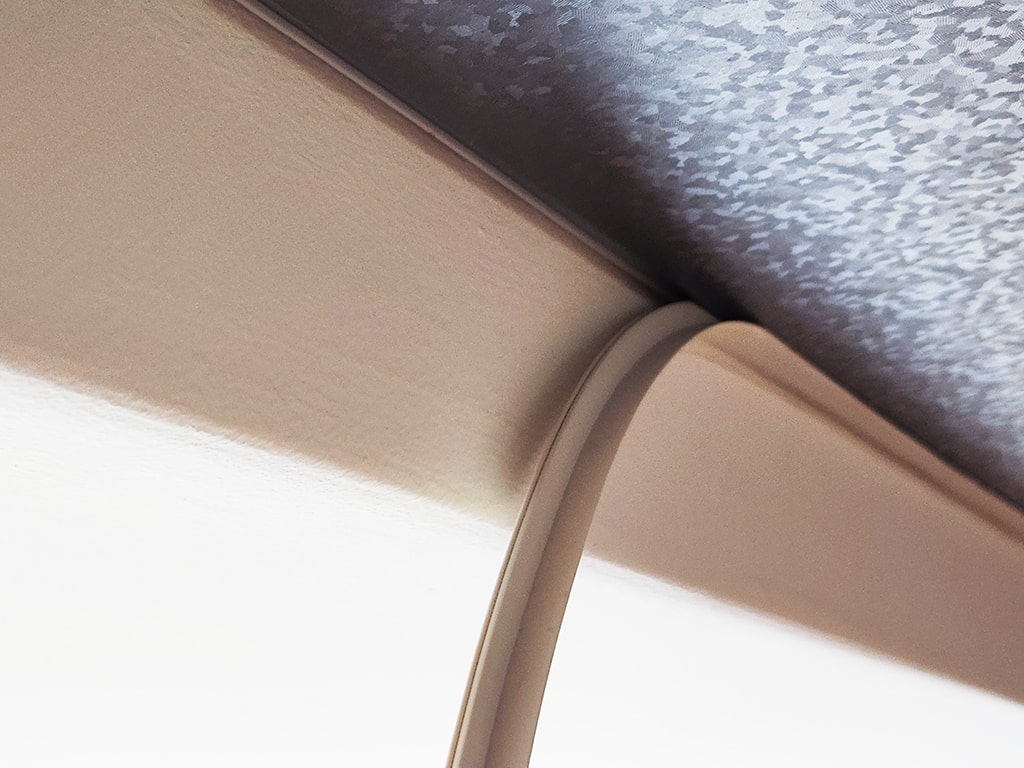Installation
1. measurements
This stage is performed during the initial assessment visit.
Although invisible to the naked eye, the walls, floors and ceilings of most premises are far from ideal, which is why it is critically important to obtain accurate measurements and determine any level discrepancies that might affect the installation and influence the appearance of the final product.
Multiple laser levels are used to accurately measure the height at which the ceiling profiles will be mounted and determine the exact angles of all corners and/or curves. Based on the acquired readings, a technician is able to draw a detailed diagram with precise dimensions of the future Stretch Ceiling.

2. Installation of Profiles and Extensions

Laser levels are continuously used throughout the installation process to guarantee perfect alignment of profiles and extensions, which is key to a successful installation of the Stretch Ceiling.
Depending on the shape of the Stretch Ceiling (i.e., full or partial room coverage) and the wall material (i.e., drywall, concrete, brick… etc.) the profiles are mounted to the walls and/or the original ceiling using screws or dowels. Rigid, multi-use aluminum profiles are used for most projects; however, if the walls are noticeably uneven, plastic profiles may be used to create an illusion of a straight surface and minimize any gaps between the mount surface and the profile.
All extensions (i.e., lights, smoke detectors… etc.) are mounted to the original ceiling and leveled prior to the installation of the PVC Material.
- Additional light extensions can be added during Stage 2 of installation provided that the necessary electrical wiring has been pre-installed by a licenced electrician.
- Once the Stretch Material is installed new ceiling fixtures cannot be added without full removal of the PVC Material.
For this stage, all TSCL technicians are equipped with drill vacuums.
3. INSTALLATION OF PVC STRETCH MATERIAL

For proper installation of the PVC Stretch Material the room is pre-heated to approximately 40°C using compressed gas (propane) heaters. To ensure an even stretch and smooth, flawless finish the material itself is also continuously heated throughout the installation process. Starting with diagonals and corners, technicians work around the perimeter installing the PVC Material into the associated profiles.
This stage must be complete in one session because Stretch PVC Material cannot be left hanging without proper tension, as that can result in permanent damage and/or significant visual impairments.
In addition, it is important to minimize air draft during this stage of installation as it can interfere with heat distribution and cause creasing of the PVC Material.
4. INSTALLATION OF PROFILE COVER
Profile cover is installed around the perimeter to hide the aluminum/plastic profile and fill any gaps between the Stretch Ceiling and the wall caused by the uneven mounting surface.
If the PVC Material is installed at a site with fluctuating humidity (i.e., bathroom, indoor swimming pool… etc.) an additional layer of silicone is applied to the perimeter prior to the installation of the profile cover to eliminate the possibility of moisture built-up in the gaps and the ceiling cavity.

Service areas
- Toronto
- Mississauga
- Brampton
- Vaughan
- Markham
- Richmond Hill
- Aurora
- Newmarket
- Pickering
- Ajax
- Oakville
- Burlington
- Milton
- Halton Hills
- Caledon
- King
- Whitchurch-Stouffville
- Uxbridge
- Whitby
- Oshawa
- Innisfil
- Barrie